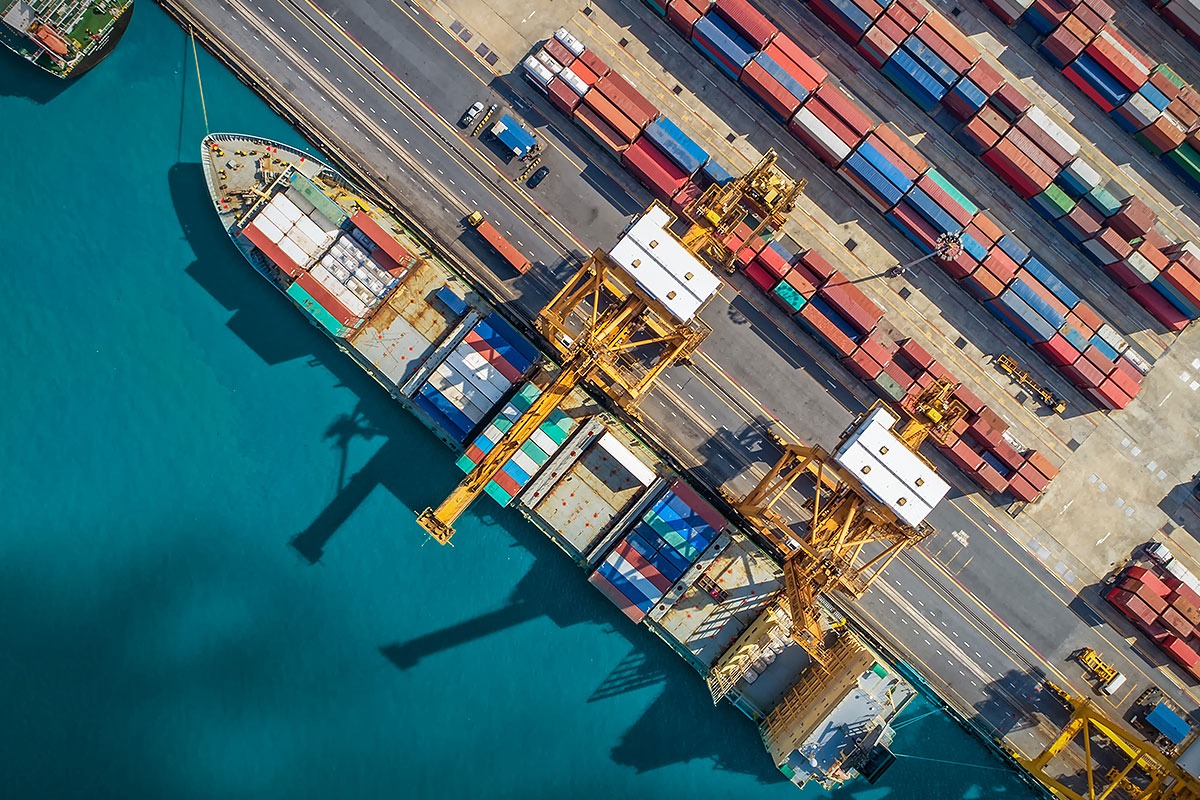Managing Supply Chain Challenges of Real Estate Development

Due to COVID-19, the United States and the world currently face severe supply chain disruptions from basic materials through manufacturing and transportation.
This affects many industries but the real estate development and construction industry, dependent on materials and equipment from many others, continues to be hit especially hard. These factors are not expected to improve for many months or longer. However, such challenges provide opportunities for project managers and owners representatives, such as Real Projectives®(RPL), to demonstrate added value by tackling them head on and with vigilance.
The pandemic forced many manufacturers and shippers across the globe to shut down for several months then try to scale back production while complying with dynamic regulations and providing healthier work environments. It also has rapidly changed economic demand quantity and location for goods and services as adults and children stayed home to work and learn remotely. These sweeping changes led to spikes in sales of new and existing homes and home renovations thereby causing a dramatic increase in the need for even more lumber, appliances, and other building materials.
Basic Materials
While the availability of basic materials has been under pressure, lumber— like 2x4s and plywood—has experienced some of the most dramatic swings, as much as a 300% price increase, and backlogs of months to get these fundamental elements of many construction projects. Lumber shortages started with a reduction in tree harvesting in the US and Canada and the closure of the US and Canadian borders. Most lumber mills were shuttered and mothballed forcing laborers, drivers, and stock hands to go on unemployment. Unfortunately, that business is both labor and capital intensive, thereby struggling to recover quickly. It takes months to a year to reopen prior plants, let alone open new ones to satisfy the increased demand.
The big box home stores competed with distributors and carpenters to obtain the same materials. To minimize impacts, our project managers implemented strategies from advanced forecasting, purchasing in bulk on multiple projects for buying power, pre-purchasing in advance and storing them on or off site, adding extra time in schedules, to increasing contingency by hundreds of thousands of dollars in budgets. The situation has improved and we continue to closely monitor spikes and adapt weekly.
The production of steel, copper and aluminum in the US and China has also been disrupted. As if COVID wasn’t enough, a large ice storm hit Texas shut down several plants for weeks that produce raw plastic and adhesives used for many building products causing ripple effects that are still being felt.
Manufacturing
For many of the same reasons as basic materials, manufacturing challenges have impacted steel fabrications, roofing, insulation, windows, electrical gear, cabinets, flooring, appliances, and a myriad of others that have persisted or go through fits and spurts at times. Highlighting steel as one example: it requires acquisition of the raw shapes from a supplier, engineering to satisfy the architect’s design, and then cutting, drilling, welding, and painting to fabricate each custom piece of the erector set. Such steps take considerable labor and time to perform—some of which can be done from home, but most at a shop with specialized equipment.
And you’ve probably heard in the news, there has been a worldwide shortage of computer chips that are functionally necessary for a preponderance of modern equipment ranging from computers, HVAC, electrical, cars and trucks, appliances, and many others. The domino effects have been widespread and predicted to persist into 2022.
While overseas vendors may offer cheaper supplies and equipment, inventory manufactured in the United States and adjacent countries, like Canada and Mexico, may be more accessible and dependable. It’s vitally important to look at each in a comprehensive way and choose accordingly for your time and cost parameters. Yes, it may be more expensive, but diversifying vendors and having a backup plan will ensure contractors are getting everything they need on time.
The right technology can help; using software to oversee inventory helps project managers know exactly what they have at any stage of a project. Thinking three to six months ahead and having a detailed inventory of materials needed to complete a project. This can save valuable time and resources later. Consider pre-ordering steel and roof joist six months in advance; you will be required to provide a holding deposit to stay in the slot for steel fabrications, details can be worked out when final drawings are complete. Even one single delivery delay can be disastrous. Because of this project managers need to plan ahead to make sure they have what they need before starting a project, even if it’s months in advance.
Forecasting construction needs and timing through rigorous scheduling (just-in-time methods rarely work these days) on each project, looking diligently into local, national, and international suppliers to make smart risk-adjusted choices, and taking proactive actions are all necessary to properly manage renovation and new construction efforts. RPL guides clients on potentially needing to explore different vendors or products if they’re unable to obtain certain supplies in a given time frame. By ordering sooner, purchasing in bulk, and looking further ahead, our clients are less likely to encounter unexpected material and equipment time and cost impacts.
Transportation
Whether basic materials or manufactured products, they all must be transported to the actual job site for assembly into the complete project. While this is a multifaceted issue driven by many causes, two aspects stand out—a shortage of delivery drivers and an imbalance of shipping containers.
North America faced a truck driver shortage even before COVID-19 due to demographic challenges and changes in the marketplace. However, the nationwide COVID shutdown temporarily slowed down some commerce, forcing many drivers to go on unemployment. According to U.S. Risk, a lack of drivers created higher trucking shipment rates as owner-operators asked for twice as much per mile. Furthermore, shippers face difficulty finding trucks and other vehicles. Combined, they have created the perfect inflationary storm in the trucking world.
But there’s an even bigger problem—the lack of quantity and imbalance of shipping containers located around the world have become a major international hurdle. Shipping containers are the lifeblood boxes used to move things around the world on trucks, trains, planes, and cargo ships. Disruption of normal imports and exports between countries have caused an imbalance in the movement of containers. Major ports in the US and elsewhere are clogged with container ships waiting days and weeks to berth, and unload at the dock. That not only directly delays the delivery of the loaded cargo; it also prevents those containers from being emptied and loaded with other goods.
While dedicated and expedited shipping options tend to be more expensive than standard common carrier freight, exclusive-use vehicles can save money over time and provide more reliability of delivery. This means your supplies are the only items on the truck or transit vehicle, maximizing every inch of space in that container to fit as much cargo as possible. This requires ample planning. Instead of ordering just the supplies needed for a current project, why not order the necessary supplies for the next five or even 10 projects? Take advantage of each delivery by using all the space available in each container. This helps lessen or avoid supply shortages later.
And if you don’t have proper space on site, consider renting storage containers to enable an early delivery of long lead items, like appliances, windows, and doors.
Proactive Management
Increased demand and under supply for construction needs likely isn’t going away anytime soon. While it’s impossible to foresee every issue or delay, there are ways astute project managers can help guide project teams to avoid or mitigate inventory and transportation disruptions. If construction companies can’t get supplies, they can’t meet deadlines, so income is lost, and reputations are damaged. Organizations that prepare diligently and make proactive decisions can compete to stay ahead of the competition and get their jobs completed for use with least amount of pain. Those that don’t engage good team members and plan accordingly may suffer significantly and even fail.
If you’re planning a new real estate development or renovation construction project, we’d be happy to discuss the risks and options to help you overcome some of the challenges the industry currently faces. Contact us today at 888.357.7342 so can further discuss how leveraging our knowledge, expertise, and ambition to drive your next project or portfolio to success.


